1. Uvod
In today’s rapidly evolving industrial landscape, galvanized steel remains one of the most essential materials for ensuring durability and longevity in a myriad of applications.
From modern construction and automotive manufacturing to marine engineering and heavy industrial production,
Galvanized steel plays a critical role in protecting steel components from corrosion and degradation.
This article provides an in-depth exploration of galvanized steel from multiple perspectives, including its manufacturing processes, Svojstva materijala, beneficije, ograničenja, i budući trendovi.
By examining these facets, engineers and industry professionals can make well-informed decisions to optimize performance, reduce maintenance costs, and achieve long-term reliability.
2. Historical Background and Evolution
The origins of galvanization date back to early industrial experiments aimed at combating rust and extending the lifespan of iron and steel.
Initially, simple dipping methods were used to coat steel components with zinc, a practice that evolved significantly over the 19th and 20th centuries.
Danas, modern galvanization processes—such as hot-dip and electro-galvanizing—reflect decades of innovation and technological advancement.
Key milestones, including the standardization of galvanizing procedures by international bodies like ASTM and ISO,
have established galvanized steel as a trusted solution for applications in harsh and corrosive environments.
3. Manufacturing Processes of Galvanized Steel
Galvanizing transforms ordinary steel into a durable material capable of withstanding harsh environmental conditions.
This process involves the application of a protective zinc coating, which significantly enhances the corrosion resistance and overall lifespan of the steel.
In modern industry, manufacturers rely on advanced galvanizing techniques to achieve consistent quality and performance.
Ispod, we explore the primary processes used in galvanizing steel, including hot-dip galvanizing, electro-galvanizing,
and other emerging methods, along with quality control and environmental considerations.
Vruće pocinčavanje
Hot-dip galvanizing is one of the most established and widely used methods for protecting steel.
U ovom procesu, steel components are immersed in molten zinc at temperatures typically around 450°C (842° F).
This immersion forms a strong metallurgical bond between the zinc and the steel, resulting in a coating thickness that generally ranges from 40 do 100 mikroni.
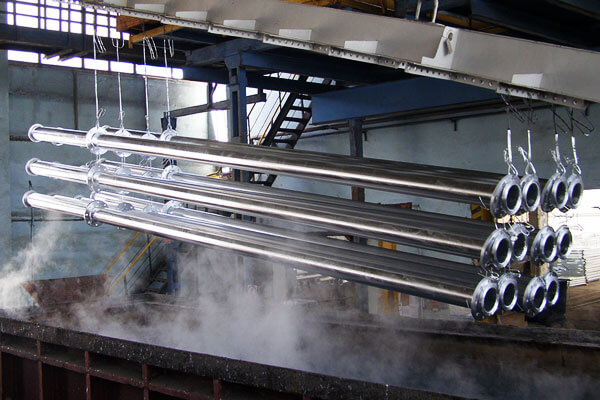
- Process Steps:
Initially, the steel is thoroughly cleaned and often pickled in acid to remove any impurities or scale.
Sljedeći, the prepared steel is dipped into a bath of molten zinc for a controlled period, allowing the zinc to adhere uniformly.
Konačno, the components are withdrawn and allowed to cool, during which the zinc layer solidifies and develops its characteristic spangled appearance. - Key Benefits:
Hot-dip galvanizing provides excellent corrosion protection, even in severe environments.
Its robust coating offers long-lasting durability and is particularly cost-effective for large-scale production.
This method is especially suited for applications in construction, infrastruktura, and heavy machinery where strength and longevity are critical.
Electro-Galvanizing
Electro-galvanizing, also known as electroplating, employs an electrochemical process to deposit a thin, uniform layer of zinc onto the steel surface.
This process takes place in an electrolyte bath and utilizes controlled electrical currents to ensure precise deposition.
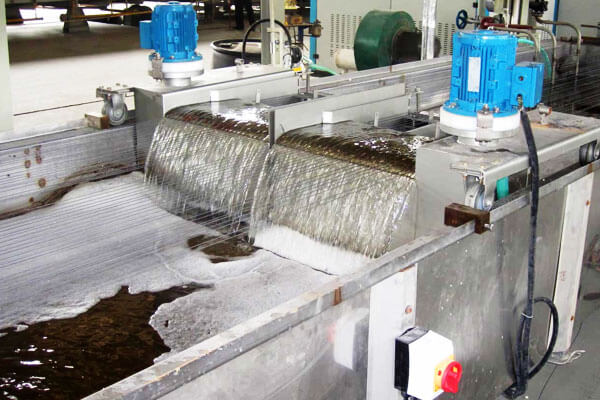
- Process Steps:
After cleaning and degreasing, the steel undergoes an electrochemical treatment in an acid-based electrolyte solution.
Under the influence of an electrical current, zinc ions are reduced and deposited onto the surface.
The result is a smooth, aesthetically pleasing coating that is typically thinner than that produced by hot-dip galvanizing—often in the range of 5 do 20 mikroni. - Key Benefits:
The electro-galvanizing process produces a highly uniform and polished finish,
making it ideal for applications where appearance and dimensional accuracy are important, such as in consumer electronics and automotive body panels.
Dodatno, its lower coating thickness may be advantageous for components where weight is a critical factor.
Alternative Galvanizing Methods
In addition to hot-dip and electro-galvanizing, several alternative methods have emerged to meet specific manufacturing needs.
- Šerardiziranje:
This process involves heating steel in a closed drum filled with zinc dust at temperatures around 300°C (572° F).
The zinc diffuses into the surface of the steel, creating a thin, ravnomjerno premazivanje.
Sherardizing is particularly useful for smaller components or for parts requiring a uniform, corrosion-resistant surface without the heavy coating typical of hot-dip processes. - Continuous Galvanizing:
Often used in the production of long steel products, continuous galvanizing applies a zinc coating to steel as it passes through a series of rollers in a continuous production line.
This method combines high throughput with excellent coating uniformity, making it suitable for applications like steel sheets and strips.
Quality Control and Environmental Considerations
Ensuring the quality of galvanized steel is paramount in high-performance applications.
Manufacturers employ a range of inspection techniques such as adhesion testing, coating thickness measurements,
and accelerated corrosion tests to verify that the zinc layer meets stringent industry standards (Npr., ASTM and ISO).
Naduti, modern galvanizing processes incorporate energy-efficient technologies and waste-reduction measures.
Na primjer, recycling of spent chemicals and the use of renewable energy sources in furnaces contribute to minimizing the environmental footprint.
Advanced control systems also help reduce material waste and optimize energy consumption, aligning with global sustainability initiatives.
4. Material Properties and Performance Characteristics of Galvanized Steel
Galvanized steel stands out due to its exceptional durability, otpor korozije, and mechanical strength, making it a preferred material across various industries.
The zinc coating not only protects the underlying steel but also enhances its overall performance.
U ovom odjeljku, we will explore the key material properties and performance characteristics of galvanized steel,
including its chemical composition, physical properties, otpor korozije, mehaničko ponašanje, izdržljivost, and surface appearance.
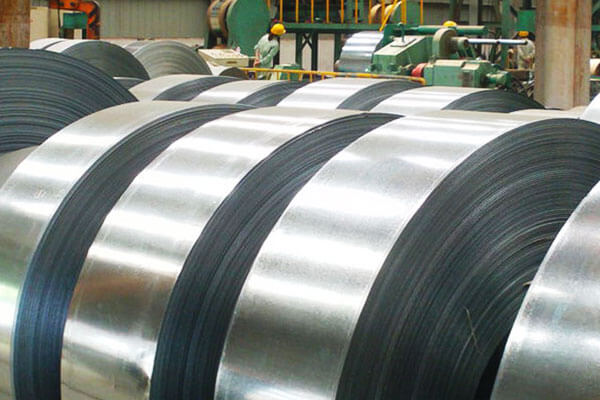
Chemical Properties of Galvanized Steel
The chemical properties of galvanized steel are primarily influenced by the interaction between the steel substrate and the zinc coating.
The zinc layer provides a dual protective function: a physical barrier against environmental exposure and a sacrificial anode that prevents steel corrosion.
Composition of the Coating:
- The outermost layer consists mainly of pure zinc (Zn).
- The inner layers form zinc-iron alloy phases, such as gamma (Γ), delta (Δ), and zeta (Ζ) phases, which improve adhesion and wear resistance.
- Additional elements like aluminum (Al) i magnezij (Mg) are sometimes added to enhance corrosion resistance, posebno u agresivnim sredinama.
Electrochemical Behavior:
- Zinc is more electrochemically active than iron, meaning it corrodes preferentially when exposed to moisture or oxygen.
- This sacrificial protection prevents rust formation on the steel substrate, even if the coating is damaged.
Physical Properties of Galvanized Steel
Galvanized steel exhibits several unique physical characteristics due to the presence of the zinc layer, which influences its density, toplinska svojstva, and conductivity.
- Gustoća:
-
- The density of galvanized steel depends on the coating thickness. Pure steel has a density of 7.85 g/cm³, while zinc has a lower density of 7.14 g/cm³.
- The combined density of galvanized steel is slightly lower than uncoated steel but remains structurally robust.
- Talište:
-
- Steel melts at approximately 1,370–1,530°C (2,500–2,800°F), while zinc melts at 419.5° C (787° F).
- The zinc layer can degrade at high temperatures, making galvanized steel unsuitable for prolonged exposure to extreme heat.
- Toplinska vodljivost:
-
- Zinc has a thermal conductivity of 116 W/m · k, lower than that of steel (50 W/m · k).
- The presence of a zinc layer slightly affects heat dissipation but does not significantly impact structural performance.
- Električna vodljivost:
-
- Zinc is a good electrical conductor, but the presence of oxide layers on its surface can affect conductivity.
- Galvanized steel is commonly used in electrical grounding applications due to its corrosion-resistant properties.
Otpor korozije
One of the most significant advantages of galvanized steel is its superior corrosion resistance.
The zinc coating forms a protective barrier that shields the underlying steel from moisture, kisik, and corrosive substances.
- Zaštita barijere:
-
- The zinc layer physically blocks corrosive agents from reaching the steel surface.
- Čak i ako je premaz izgreban, the surrounding zinc provides continued protection through sacrificial corrosion.
- Sacrificial Protection (Galvanic Effect):
-
- Zinc is anodic to steel, meaning it corrodes before the steel does.
- This is particularly beneficial in coastal and industrial environments where high humidity and pollutants accelerate corrosion.
- Corrosion Rate in Different Environments:
-
- U urban environments, galvanized steel has a typical lifespan of 50+ godina.
- U morsko okruženje, where salt exposure is high, the lifespan is 20– 25 godina, depending on coating thickness.
- U industrial settings, exposure to sulfur dioxide (SO₂) and other pollutants can reduce the lifespan to 30– 40 godina.
Mechanical Properties of Galvanized Steel
The mechanical properties of galvanized steel, such as tensile strength, duktilnost, i otpornost na udarce, determine its suitability for different structural and industrial applications.
- Zatečna čvrstoća:
-
- Galvanization has minimal impact on the inherent tensile strength of steel, which typically ranges from 250 MPA do 550 MPA, depending on the steel grade.
- The zinc coating does not weaken the steel but provides an additional protective layer.
- Ductility and Formability:
-
- Galvanized steel retains good ductility, allowing it to be bent, žigosana, and formed into various shapes.
- Međutim, excessive bending can cause microcracks in the zinc coating, exposing the steel to potential corrosion.
- Otpor udara:
-
- The zinc-iron alloy layers enhance the impact resistance of galvanized steel, making it less prone to surface wear and damage.
- This property is particularly useful in applications requiring high mechanical durability, such as guardrails, structural beams, i industrijski strojevi.
Trajnost i dugovječnost
Galvanized steel is recognized for its long service life, making it an ideal choice for applications requiring minimal maintenance.
- Lifespan Under Different Conditions:
-
- Coating thickness plays a critical role in determining longevity.
- A 5–10 μm electro-galvanized coating lasts 5–15 years, dok a 50–100 μm hot-dip galvanized coating lasts 30–70 years, depending on exposure conditions.
- Weather Resistance:
-
- The zinc layer effectively protects against UV radiation, vlage, and pollutants, ensuring long-term performance in outdoor applications.
- Self-Healing Ability:
-
- The zinc coating can heal small scratches through oxidation, where zinc reacts with moisture to form a protective patina that prevents further corrosion.
Surface Appearance
The surface finish of galvanized steel varies depending on the galvanizing method used.
- Hot-Dip Galvanized Steel:
-
- Features a rough, spangled surface with visible crystallization patterns.
- Suitable for structural applications but may require additional finishing for aesthetic purposes.
- Electro-Galvanized Steel:
-
- Has a smooth, uniform appearance with a matte or glossy finish.
- Often used in consumer products, Automobilske komponente, i elektronike.
- Powder-Coated or Painted Galvanized Steel:
-
- Some galvanized steel products undergo additional surface treatments to enhance appearance and increase corrosion resistance.
5. Benefits of Galvanized Steel
Galvanized steel, which is steel that has been coated with a layer of zinc to prevent corrosion, offers numerous advantages across various applications.
Here are the key benefits that make galvanized steel a preferred choice in construction, proizvodnja, and other industries:
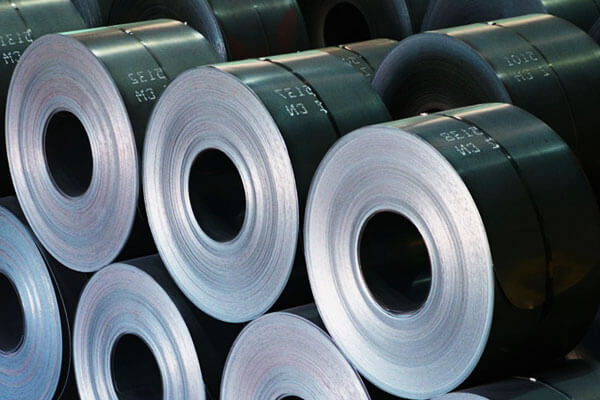
Otpor korozije
- The primary benefit of galvanized steel is its enhanced resistance to corrosion.
The zinc coating acts as a barrier between the steel and environmental elements such as moisture, kisik, and salts, significantly slowing down the rusting process.
Dugovječnost
- Due to its superior corrosion resistance, galvanized steel provides longer life spans for structures and components compared to untreated steel.
This longevity reduces the need for frequent maintenance and replacement, making it a cost-effective solution over time.
Izdržljivost
- Galvanized steel is highly durable and can withstand mechanical damage better than many other materials.
It retains its strength and integrity under harsh conditions, including extreme weather and physical stress.
Low Maintenance
- Once installed, galvanized steel requires minimal maintenance.
Its protective zinc layer eliminates the need for painting or additional surface treatments, reducing ongoing costs and effort associated with upkeep.
Troškovna učinkovitost
- Although the initial cost of galvanized steel might be higher than plain steel, the long-term savings from reduced maintenance and extended service life often outweigh this upfront expense.
Dodatno, the durability of galvanized steel means less material waste and lower lifecycle costs.
Svestranost
- Galvanized steel can be used in a wide range of applications, from small hardware items to large structural components.
Its adaptability makes it suitable for diverse industries including construction, automobilski, poljoprivreda, and renewable energy sectors.
Održivost
- Galvanizing is an environmentally friendly process because zinc is a naturally occurring element and can be recycled repeatedly without losing its chemical or physical properties.
Using galvanized steel supports sustainable practices by extending the lifespan of products and reducing the need for new raw materials.
Estetska privlačnost
- The shiny, smooth finish of freshly galvanized steel can add an attractive appearance to projects where aesthetics matter.
For those preferring a different look, galvanized steel surfaces can also be easily painted or powder-coated.
Time Efficiency
- Galvanizing is a relatively quick process compared to applying multiple layers of paint or other protective coatings.
This efficiency can lead to faster project completion times and quicker turnaround for manufacturers.
6 Limitations and Challenges of Galvanized Steel
Coating Degradation
Over extended periods, the zinc coating may wear or spall, particularly in extremely corrosive environments.
This degradation can compromise the protective benefits if not periodically maintained.
Aesthetic Limitations
While hot-dip galvanizing provides excellent protection, its characteristic spangled finish may not meet the aesthetic requirements for certain consumer applications.
Although electro-galvanizing offers a smoother finish, it typically provides a thinner coating.
Environmental and Health Considerations
Galvanization processes involve high temperatures and the use of chemicals, which raise environmental and safety concerns.
Manufacturers must implement effective waste management and emission control systems to minimize the environmental impact.
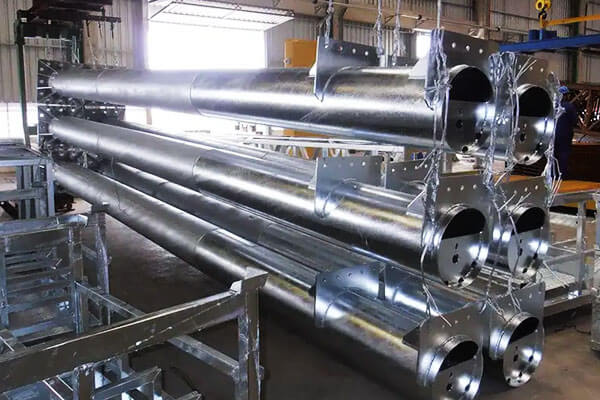
Cost Implications
In high-precision or low-volume applications, the additional cost of galvanizing might not always be justified.
Engineers must weigh the benefits of extended durability against the increased production costs, especially when alternative corrosion protection methods are available.
7. Applications Across Industries
Izgradnja i infrastruktura
Galvanized steel is a staple in building structures, mostovi, and reinforcement bars.
Its durability and corrosion resistance ensure that infrastructure remains robust and reliable over decades, even in adverse weather conditions.
Automobilska industrija
u automobilski sector, galvanized steel is used for body panels, chassis components, and undercarriages.
Its resistance to corrosion from road salts and environmental exposure helps extend the lifespan of vehicle components and reduce maintenance costs.
Pomorske i offshore aplikacije
A morski environment presents significant corrosion challenges.
Galvanized steel plays a critical role in shipbuilding and offshore structures, where its ability to withstand saltwater corrosion and harsh marine conditions ensures long-term performance.
Industrijski strojevi i oprema
Heavy industrial machinery benefits from the longevity and low-maintenance attributes of galvanized steel.
Components such as structural supports, spremnici za skladištenje, and conveyor systems utilize galvanized steel to ensure safe and efficient operation under continuous stress.
Agricultural and Utility Infrastructure
Galvanized steel finds application in agricultural machinery, utility poles, and other infrastructural elements.
Its cost-effectiveness and durability make it ideal for outdoor use, where exposure to the elements is constant.
8. Galvanized Steel vs. Regular Steel: A Comprehensive Comparison
Steel is one of the most widely used materials in construction, proizvodnja, automobilski, i industrijske primjene.
Međutim, not all steel is the same—while regular steel (also known as carbon steel) is strong and versatile, galvanized steel offers enhanced corrosion resistance and longevity.
Material Composition and Protective Properties
Galvanized Steel
Galvanized steel consists of a carbon steel core coated with a layer of zinc through hot-dip galvanizing or electro-galvanization. The zinc coating serves two key purposes:
- Zaštita barijere: The zinc forms a physical shield that prevents moisture and corrosive substances from reaching the steel.
- Sacrificial Protection: If the coating is damaged, the zinc corrodes first, preventing oxidation of the underlying steel.
Regular Steel
Regular steel, often referred to as mild steel or carbon steel, je prvenstveno sastavljen od iron and carbon with small amounts of alloying elements such as manganese and phosphorus.
Međutim, because it lacks a protective layer, it is highly susceptible to oxidation and rust when exposed to air and moisture.
Corrosion Resistance and Environmental Durability
| Imovina | Galvanized Steel | Regular Steel |
|---|---|---|
| Rust Resistance | Excellent—zinc coating prevents oxidation. | Poor—rusts when exposed to air and moisture. |
| Lifespan in Outdoor Conditions | 30–70 years, depending on the environment and coating thickness. | 5– 20 godina, with regular maintenance required. |
| Performance in Marine/Industrial Environments | High resistance to saltwater, kemikalije, and pollutants. | Rapid corrosion without protective treatments. |
Strength and Mechanical Properties
| Imovina | Galvanized Steel | Regular Steel |
|---|---|---|
| Zatečna čvrstoća | Slightly reduced due to zinc layer but still strong. | Typically higher raw tensile strength. |
| Duktilnost | Lower than regular steel due to brittle zinc coating. | More ductile, allowing easier bending and forming. |
| Zavarivost | Requires special precautions due to zinc fumes. | Easier to weld, but needs rust protection after welding. |
| Obradivost | Slightly harder due to the coating but still workable. | Easier to machine and shape. |
Aesthetic and Surface Finish Differences
| Faktor | Galvanized Steel | Regular Steel |
|---|---|---|
| Izgled | Matte gray with a spangled or smooth surface. | Dark gray or blueish with a uniform, raw appearance. |
| Painting Requirements | Can be painted, but requires special primers. | Can be painted easily but needs rust inhibitors. |
| Texture Variability | May have a rough or irregular surface due to galvanization. | Smoother finish, depending on manufacturing process. |
Cost Comparison and Economic Considerations
| Cost Factor | Galvanized Steel | Regular Steel |
|---|---|---|
| Initial Material Cost | Higher due to zinc coating. | Lower upfront cost. |
| Long-Term Cost | Lower due to minimal maintenance. | Higher due to regular rust treatment, slika, and repairs. |
| Total Lifecycle Cost | More cost-effective over time. | Can become expensive with maintenance and replacements. |
Common Applications of Galvanized Steel vs. Regular Steel
| Application Sector | Galvanized Steel Uses | Regular Steel Uses |
|---|---|---|
| Konstrukcija | Pokrivanje krovova, ograde, structural beams, mostovi. | Structural frameworks, reinforcement bars, grede. |
| Automobilski | Car bodies, undercarriages, spremnici za gorivo. | Okviri, Komponente motora, karoserijski paneli (when coated). |
| Industrijska oprema | Cijevi, spremnici za skladištenje, dijelovi strojeva. | Heavy-duty machinery, zupčanici, osovine. |
| Morski i offshore | Ship components, docks, oil rigs. | Limited due to poor corrosion resistance. |
| Poljoprivreda | Barns, silos, irrigation systems. | Equipment, machinery parts requiring frequent maintenance. |
9. Zaključak
Galvanized steel plays a pivotal role in modern industry by offering unmatched corrosion protection, ekonomičnost, and enhanced structural integrity.
This comprehensive analysis has explored its historical evolution, proizvodni procesi, Svojstva materijala, and applications across diverse sectors.
While challenges such as coating degradation and environmental impact remain,
ongoing innovations and digital advancements promise to further optimize the performance of galvanized steel.
By understanding these multi-faceted aspects, engineers and industry professionals can make informed decisions,
ensuring that their material selection not only meets the performance requirements but also contributes to long-term sustainability and cost savings.
If you’re looking for high-quality Galvanized steel products, odabir OVAJ je savršena odluka za vaše proizvodne potrebe.



